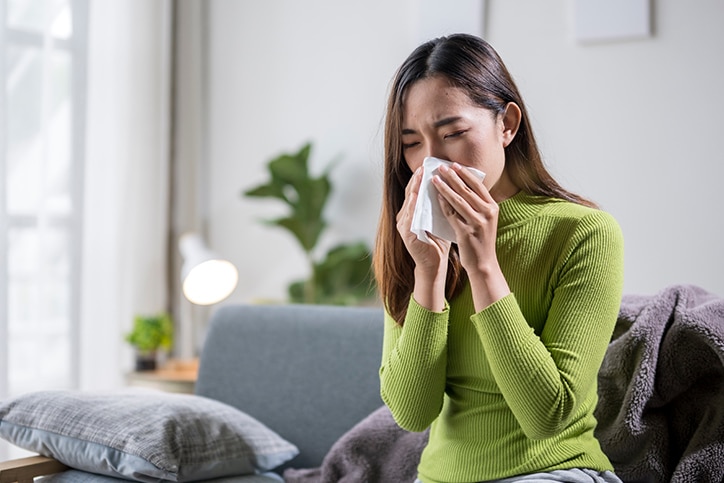If you’re constantly sneezing, coughing, or dealing with itchy eyes—especially indoors—your HVAC system might be to blame. Many homeowners don’t realize that their heating, ventilation, and air conditioning (HVAC) system plays a major role in indoor air quality, which directly affects allergy symptoms. In fact, a poorly maintained HVAC system can circulate dust, pollen, pet dander, mold spores, and other allergens throughout your home.
How HVAC Systems Affect Indoor Air Quality
Your HVAC system does more than heat or cool your home—it continuously circulates air through filters and ducts. If the filters are dirty or the ductwork is contaminated, the system can spread allergens instead of filtering them out. Over time, this can worsen symptoms for allergy sufferers, especially during peak allergy seasons in the spring and fall.
Common HVAC-Related Allergy Triggers
- Dirty Air Filters
Air filters trap airborne particles, but when they become clogged, they stop working effectively. This allows allergens to continue circulating throughout your home. - Mold in Ductwork or the System Itself
HVAC systems can accumulate moisture, especially in humid climates. This creates the perfect breeding ground for mold and mildew, which are serious allergens. - Dust and Debris in Air Ducts
Over time, dust, pet dander, and other allergens can settle inside your ducts. When the system turns on, those particles are blown right into your living space. - Improper Humidity Levels
High humidity can encourage mold growth, while low humidity can dry out your nasal passages, making you more susceptible to allergens.
Ways to Improve Your HVAC System and Reduce Allergies
- Change Air Filters Regularly
Replace standard filters every 1–3 months, or more often if you have pets or live in a dusty area. Consider upgrading to HEPA filters, which capture smaller particles like pollen and mold spores. - Schedule Regular HVAC Maintenance
Having your system professionally inspected and cleaned at least twice a year ensures it’s running efficiently and not contributing to poor air quality. - Clean Ductwork
Professional duct cleaning can remove years of accumulated dust, allergens, and mold. This is especially helpful if you’ve recently renovated or moved into an older home. - Use a Whole-Home Dehumidifier or Humidifier
Maintaining balanced indoor humidity levels (ideally between 30–50%) helps prevent mold growth and keeps allergens under control. - Install an Air Purifier
Standalone or integrated HVAC air purifiers can dramatically improve air quality by removing airborne allergens before they reach your lungs.
Final Thoughts
If you or your family members struggle with indoor allergies, your HVAC system could be a hidden culprit. The good news? With a few simple adjustments—like changing filters, cleaning ducts, and scheduling regular maintenance—you can breathe easier and enjoy a healthier home.
Not sure where to start? Contact Dragon Air Services today for an indoor air quality assessment.

